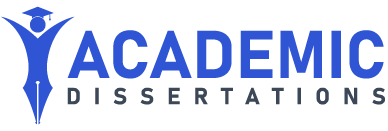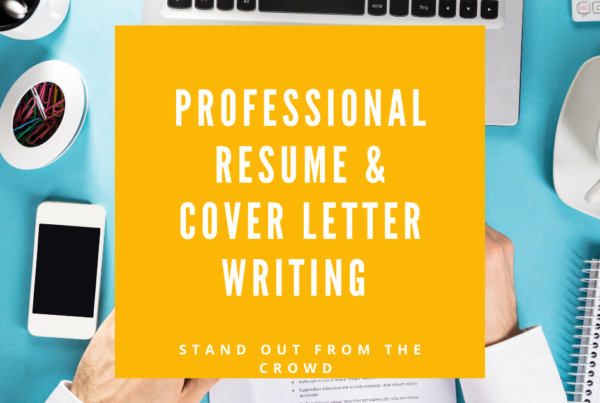In the competitive world of job hunting, it is crucial to understand the distinctions between a cover letter and a resume. These two documents play distinct roles in the job application process, each serving a specific purpose. In this comprehensive guide, we will delve into the differences between a cover letter and a resume, highlighting their unique characteristics and guiding you towards crafting compelling and effective versions of each. By the end of this article, you will be equipped with the knowledge to create standout application materials that can help you secure your dream job.
-
The Purpose of a Resume:
A resume serves as a concise summary of your professional background, skills, qualifications, and achievements. It provides a snapshot of your career trajectory and showcases your relevant experience to potential employers. A well-crafted resume is crucial for catching the attention of hiring managers, as it highlights your key strengths and demonstrates your suitability for the desired position.
-
The Purpose of a Cover Letter:
While a resume provides a condensed overview of your qualifications, a cover letter offers a more personalized touch. It allows you to express your interest in a specific job, elaborate on your motivations, and convey your unique personality and passion. A cover letter provides an opportunity to showcase your excellent written communication skills and present yourself as a strong candidate beyond what is captured in your resume.
-
Content and Structure:
a. Resume: A typical resume includes sections such as:
- Contact Information: Your name, phone number, email address, and professional social media profiles.
- Summary or Objective Statement: A brief overview of your career goals, skills, and qualifications.
- Work Experience: A chronological list of your previous job positions, highlighting your responsibilities and achievements.
- Education: Information about your educational background, including degrees, institutions, and relevant coursework.
- Skills: A comprehensive list of technical and transferable skills relevant to the job.
- Certifications and Training: Any additional certifications or specialized training you have obtained.
- References: Optional, but you can provide professional references who can vouch for your abilities and character.
b. Cover Letter: A well-structured cover letter should include the following elements:
- Header: Your contact information and the date of writing.
- Salutation: Addressing the hiring manager by name, if possible, or using a generic greeting.
- Opening Paragraph: Clearly state the purpose of your letter and introduce yourself.
- Body Paragraphs: Elaborate on your relevant experience, skills, and qualifications, making a strong case for why you are the ideal candidate for the position.
- Closing Paragraph: Express gratitude for considering your application, provide contact information, and express your interest in further discussing the opportunity.
- Signature: End with a professional closing, followed by your typed name and contact information.
-
Tailoring to the Job:
Both the resume and the cover letter should be tailored to the specific job you are applying for. Research the company and the role thoroughly, and use the job description as a guide to highlight your relevant qualifications and skills. By customizing your application materials, you demonstrate your genuine interest and dedication, making a strong impression on hiring managers.
Resumes vs. Cover Letters: What Do They Do?
Introduction:
In the realm of job applications, two crucial documents play distinct roles: resumes and cover letters. Understanding the purpose and function of each is vital for effectively presenting your qualifications and standing out from other candidates. In this comprehensive guide, we will explore the differences between resumes and cover letters, shedding light on their unique roles in the job search process. By the end of this article, you will have a clear understanding of how to leverage these documents to maximize your chances of landing your dream job.
-
The Role of a Resume:
A resume serves as a concise summary of your professional background, qualifications, skills, and achievements. It provides a snapshot of your career journey, highlighting your relevant experience and demonstrating your fit for a specific role. A well-crafted resume is essential for capturing the attention of hiring managers and securing an interview.
When creating a resume, consider including the following sections:
- Contact Information: Begin with your name, phone number, email address, and optionally, links to your professional social media profiles or personal website.
- Professional Summary: Craft a brief overview that highlights your career goals, key skills, and qualifications, tailored to the specific job you’re applying for.
- Work Experience: List your previous job positions in reverse chronological order, emphasizing your responsibilities, accomplishments, and the impact you made in each role.
- Education: Include details about your educational background, such as degrees earned, institutions attended, and relevant coursework or academic honors.
- Skills: Showcase your technical and transferable skills that align with the job requirements, emphasizing proficiency in specific software, languages, or methodologies.
- Certifications and Training: Highlight any additional certifications or specialized training that demonstrate your dedication to professional development.
- Awards and Achievements: If applicable, mention notable awards, recognition, or achievements that set you apart from other candidates.
- References: Optional, but you can provide professional references who can vouch for your abilities and character, with their contact information and permission.
-
The Role of a Cover Letter:
While a resume provides a concise overview of your qualifications, a cover letter complements it by offering a more personalized and persuasive narrative. A cover letter allows you to showcase your written communication skills, express your interest in a specific job, and convey your unique value proposition to potential employers.
When writing a cover letter, consider following this structure:
- Header: Include your contact information, the date, and the recipient’s details.
- Salutation: Address the hiring manager by name if available, or use a professional greeting.
- Opening Paragraph: Introduce yourself and state the position you’re applying for. Express your enthusiasm for the role and briefly explain why you are interested in the company.
- Body Paragraphs: Elaborate on your relevant experiences, skills, and accomplishments, aligning them with the job requirements. Use specific examples to demonstrate your qualifications and highlight how you can contribute to the organization.
- Closing Paragraph: Express gratitude for considering your application and reiterate your interest in the position. Provide your contact information and indicate your availability for an interview.
- Sign-off: End with a professional closing, such as “Sincerely,” followed by your typed name.
-
Understanding the Distinctions:
While a resume focuses on presenting your qualifications and work history, a cover letter allows you to provide context, showcase your personality, and explain why you are a good fit for the role and the organization. A resume is typically structured and bullet-pointed, while a cover letter offers a more narrative format to tell your story and make a persuasive case for your candidacy.
Resumes vs. Cover Letters: How Are They Formatted?
Introduction:
When it comes to job applications, two key documents, resumes and cover letters, play a crucial role in showcasing your qualifications and suitability for a position. Understanding how to format these documents correctly is essential for creating a professional and polished impression. In this comprehensive guide, we will explore the formatting guidelines for resumes and cover letters, providing you with the knowledge to present your information effectively and stand out from the competition. By the end of this article, you will have a clear understanding of how to format both resumes and cover letters to maximize their impact in the job search process.
-
Formatting a Resume:
A resume should be well-structured, easy to read, and visually appealing. Here are some key formatting guidelines to follow when creating a resume:
a. Font and Font Size: Use a professional and legible font such as Arial, Calibri, or Times New Roman. Keep the font size between 10 and 12 points to ensure readability.
b. Margins: Set the margins to approximately 1 inch on all sides to maintain a balanced appearance and provide sufficient white space.
c. Headings: Use bold or slightly larger font sizes for section headings such as “Contact Information,” “Work Experience,” “Education,” and “Skills.” This helps to clearly separate different sections and make the resume easy to navigate.
d. Bullet Points: Utilize bullet points to list your responsibilities, achievements, and skills within each section. This formatting choice helps to organize information and make it more scannable for recruiters.
e. Consistency: Maintain consistent formatting throughout the document. Use the same font, font size, and bullet point style across all sections.
f. Length: Generally, aim to keep your resume to one or two pages in length. Prioritize relevant information and avoid including excessive details that may overwhelm the reader.
g. White Space: Ensure that there is enough white space between sections and bullet points. This helps to improve readability and gives the document a clean and professional look.
-
Formatting a Cover Letter:
A cover letter should be presented in a professional and well-organized format. Consider the following formatting guidelines when crafting a cover letter:
a. Contact Information: Place your contact information at the top of the document, aligned with the left margin. Include your full name, phone number, email address, and optionally, links to your professional social media profiles or personal website.
b. Recipient’s Information: Below your contact information, include the recipient’s details, such as the hiring manager’s name, job title, company name, and company address. Ensure that this information is accurate and up-to-date.
c. Salutation: Address the hiring manager by name if possible. If the name is unknown, use a professional greeting such as “Dear Hiring Manager” or “Dear [Company Name] Recruiter.”
d. Paragraph Structure: Divide the cover letter into three to four paragraphs. Begin with an engaging introduction, followed by one or two paragraphs that highlight your qualifications, skills, and experiences relevant to the job. Conclude with a strong closing paragraph expressing your interest and gratitude.
e. Alignment and Spacing: Use left alignment for the entire cover letter. Leave a blank line between each paragraph for clarity and readability.
f. Tone and Language: Maintain a professional tone throughout the cover letter. Use clear and concise language, and avoid using jargon or excessive technical terms. Proofread the document carefully to eliminate any grammatical or spelling errors.
g. Closing and Signature: End the cover letter with a professional closing, such as “Sincerely” or “Best Regards,” followed by your typed name. Leave space for your signature if printing the document.
Difference in Cover Letter Tone vs. Resume Tone
When it comes to job applications, both the cover letter and resume play vital roles in presenting your qualifications and experiences to potential employers. While the content of these documents may overlap to some extent, it is important to recognize that the tone and approach differ between a cover letter and a resume. In this article, we will explore the distinctions in tone and provide guidance on how to strike the right balance when crafting each document. By understanding these differences, you can effectively convey your suitability for a position and make a strong impression on hiring managers.
-
The Tone of a Resume:
Resumes typically have a more formal and concise tone. They are focused on presenting factual information about your qualifications, work history, and achievements. Consider the following guidelines when establishing the tone of your resume:
a. Objective Language: Use objective language that emphasizes your skills and experiences without excessive embellishment. Focus on facts and achievements, avoiding subjective or opinionated statements.
b. Third Person Point of View: Write your resume in the third person to maintain a professional and objective tone. Avoid using personal pronouns such as “I” or “me.”
c. Quantifiable Achievements: Highlight your accomplishments in a quantifiable manner, using metrics, percentages, or numbers whenever possible. This helps to reinforce the impact of your work and demonstrates your abilities in a concrete way.
d. Professional Language: Employ industry-specific terminology and jargon to showcase your expertise. However, be cautious not to overwhelm the reader with technical terms if they are not relevant to the specific job or industry.
e. Consistency: Maintain a consistent tone throughout the resume. Use parallel sentence structures and consistent language choices to create a cohesive and professional document.
-
The Tone of a Cover Letter:
A cover letter provides an opportunity to showcase your personality, enthusiasm, and fit for the role and company. While maintaining a professional tone, it allows for a more conversational and engaging approach. Consider the following guidelines when establishing the tone of your cover letter:
a. Personalization: Address the reader directly and personalize your cover letter to the specific company and position. Research the organization and demonstrate your understanding of their values, mission, and culture.
b. First Person Point of View: Write your cover letter in the first person to establish a more conversational tone. Use personal pronouns such as “I” and “my” to convey ownership of your experiences and express your motivations.
c. Storytelling: Share compelling stories or experiences that demonstrate your skills, qualifications, and passion for the industry or role. This helps to create a connection with the reader and make your cover letter more memorable.
d. Language and Tone: Use a friendly and enthusiastic tone throughout the cover letter, while maintaining professionalism. Showcase your excitement for the opportunity and convey your genuine interest in the company and its mission.
e. Research and Customization: Reference specific details about the company, such as recent achievements, projects, or initiatives, to demonstrate your knowledge and genuine interest. This showcases your proactive approach and dedication to the application process.
f. Persuasive Language: Use persuasive language to convince the reader of your suitability for the position. Highlight your unique value proposition and how your skills align with the company’s needs and goals.
Conclusion:
In conclusion, understanding the difference in tone between a cover letter and a resume is essential for effectively communicating your qualifications and standing out in the job application process. While a resume maintains a formal and concise tone, focusing on factual information, a cover letter allows for a more personal and engaging approach. By striking the right balance between professionalism and personalization, you can create a compelling application package that showcases your skills, experiences, and enthusiasm for the role.








